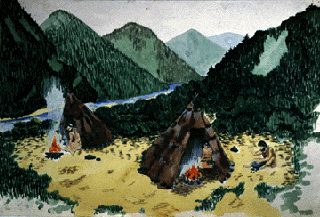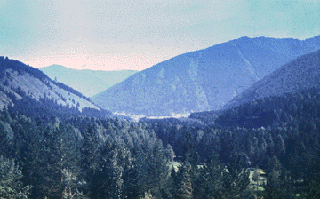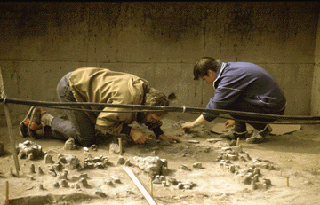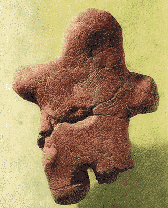 |
It has given a chance to trace a long-term culture change
in the context of changing environments and to reconstruct economy and
lifeways of the Stone Age Man. The oldest assemblage (Layer 2 of Ui I)
was associated with periglacial fluvial deposits of the 23- to 25m terrace,
it could be dated to the beginning of the Sartan Glaciation (22,000-17,000
BP). Faunal remains include Asiatic wild ass, ibex, bison, etc. The majority
of more recent Upper Paleolithic living floors (Maininskaia, Ui II) were
embedded in alluvial deposits and overlying strata of the second (14- to
18-m terrace) of the Yenisei.Their geological setting and radiocarbon dates
indicate Late Sartan age (18,000-10,000 B.P.).Red deer, wild sheep and
bison predominated in the fauna. Palynological data indicate the alternation
of steppe grasslands with mixed forests (pine, Siberian pine, birch, etc.).
Forest landscapes substituted periglacial steppes during the Late Sartan
interstadials; the latters resulted in the formation of buried soils identified
in the upper portions of stratigraphic columns. Numerous structural features
opened in large horizontal exposures provided the basis for the study of
organization of inhabited space of the hunter-gatherer seasonal camp sites.Apart
from rich and diversified stone, bone, and antler inventory and personal
ornaments, the site of Maininskaia produced an unique anthropomorphic figurine
made of baked clay - the first discovery of Pleistocene ceramic objects
in Siberia. |








